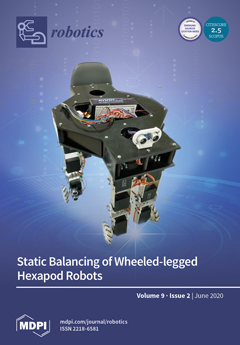Open AccessArticle
Wheeled Robot Dedicated to the Evaluation of the Technical Condition of Large-Dimension Engineering Structures
by
Jarosław Domin, Marcin Górski, Ryszard Białecki, Jakub Zając, Krzysztof Grzyb, Paweł Kielan, Wojciech Adamczyk, Ziemowit Ostrowski, Paulina Wienchol, Kamil Lamkowski, Jakub Kamiński, Mateusz Doledutko and Radosław Rosiek
Cited by 3 | Viewed by 5073
Abstract
There are many reasons why engineering structures are at risk of losing their loading capacity during their long-term exploitation, which may lead to hazardous states. In such cases, structures must be strengthened. The most popular technique of strengthening is based on the use
[...] Read more.
There are many reasons why engineering structures are at risk of losing their loading capacity during their long-term exploitation, which may lead to hazardous states. In such cases, structures must be strengthened. The most popular technique of strengthening is based on the use of composite materials—fiber-reinforced polymer (FRP) elements attached to the structure with the special resins. FRP elements are applied externally, often in hard to reach places, which makes it difficult to diagnose the durability and quality of such a connection. In this study, a combination of a modern thermographic method was proposed, which makes it possible to assess the degree of damage to the contact of the structure with the composite material along with the running platform (wheeled robot) equipped with a set of diagnostic sensors. The development potential of such a solution for subsequent projects was also indicated.
Full article
►▼
Show Figures





